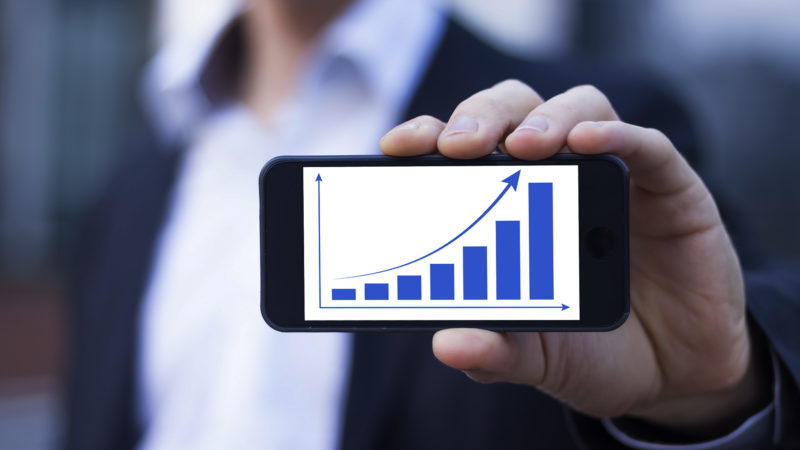Mobile Fanatics: Where Social, Video And Calls Intersect
As mobile goes front and center with call analytics, columnist Bill Dinan urges marketers not to ignore other media channels like social and video.
Mobile has dominated much of the current conversation surrounding call analytics, and a recent consumer survey from the Local Search Association bolstered that trend. But as the frenzy over mobile in call measurement and call analytics continues, it’s imperative that marketers don’t ignore other growing media channels, such as social and video, that they can leverage to help drive calls.
The Mobile Fanatics study, conducted by Thrive Analytics for LSA, found that 60 percent of U.S. adults choose mobile devices over PCs when searching for local products or services online.
A segment of hyper-connected mobile users, aptly called the “Mobile Fanatics,” makes up 43 percent of the smartphone user population. This percentage was only 30% just a little more than a year ago. Not only does this group conduct more than 10 mobile searches a week, but Mobile Fanatics are more likely to use social and video when making purchase decisions.
What’s more, the study identifies high mobile-driven purchase categories — e.g., Restaurants, Insurance, Automotive, Home Repair Services — and shows that these same categories have strong call conversion, particularly among Mobile Fanatics.
As an example, Restaurants is a high call-to-purchase category, and the LSA study shows that 42 percent of mobile users ultimately made a Restaurant transaction in the previous 30 days. This percentage jumped to 62 percent for the percentage of Mobile Fanatics that made a purchase.
Similarly, in Insurance, another leading calls category, 16 percent of all smartphone users made a purchase in the last 30 days, while the Mobile Fanatics purchase rate was much higher — 28 percent.
Don’t Forget Social And Video
But even as mobile has rightfully consumed much of the call measurement and call analytics conversations, there are other growing media channels that deserve attention, namely social and video. The Mobile Fanatics study reiterates this, saying social plays a critical role in the mobile shopping experience.
Certainly, the ubiquity of mobile has contributed to the increased demand for video and social media.
Whereas video production was cost-prohibitive for many small- to midsize businesses (SMBs) just a few years ago, there’s been a democratization of video production services and a greater interest in video thanks to YouTube, Vimeo and other platforms. BIA/Kelsey forecast that local online video revenues will grow to $3 billion this year.
For social, whether it’s Facebook, LinkedIn, Instagram or Twitter, the medium has clearly matured, and marketers of all sizes have been aggressively seeking new consumers and clients via these channels. In fact, a Salesforce survey of 5,000 marketers recently showed that 70 percent are planning to increase their social media spending in 2015.
With video and social media in play, as well as the shift from a linear path to purchase to what LSA compares to a “pretzel-like” purchase process, how can an SMB, national advertiser or agency know which media are performing?
Just as calls have become a natural measure of mobile media success, tracking offline calls and the associated analytics can also help validate and prioritize social and video spending. In many ways, the best practices for leveraging calls in video and social programs are the same as with any media.
Best Practices For Driving Calls With Video And Social
• Local numbers are key. When possible, make sure call-tracking numbers are local. Consumers are more likely to call a local business or a national brand with a local presence. In fact, our xAd/Telmetrics Mobile Path-to-Purchase study showed consumers prefer local phone numbers 3-to-1.
• Prominently feature the phone number. More than 60 percent of mobile consumers say it’s very important to be able to call a business in the purchase phase — and what do they need to make that call? A phone number. Featuring phone numbers prominently in your social and video programs is essential to using the media to help drive calls.
• Track calls separately across different media. To better monitor the offline traction of the programs — regardless of media — make the incremental investment to ensure different media are tracked with different call-tracking numbers. This will help reveal the impact of the ad program.
• Block spam calls. As nearly 40 percent of all calls placed to ads originate from telemarketers, it’s key to eliminate spam calls before they reach a business. Using a tech partner that has the scale and technology to block spam calls saves time, frustration and money as well as ensures the quality of the call tracking analytics.
Opinions expressed in this article are those of the guest author and not necessarily MarTech. Staff authors are listed here.
Related stories
New on MarTech


